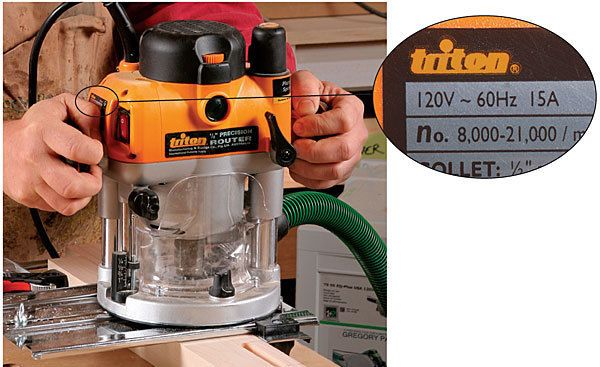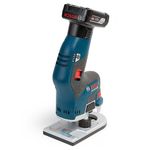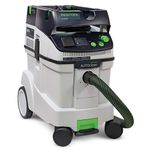
Q:
Greg Paolini recently tested dedicated plunge routers with 3-hp motors (“Heavy-Duty Plunge Routers,” FWW #214). All of the routers have 120-volt motors. As I understand it, a typical 120-volt circuit couldn’t support a true 3-hp motor, so what do those ratings refer to?
Bill Mulvihill, Ottawa, None
A:
All manufacturers of portable power tools play a similar numbers game. The ratings refer to the motor’s peak horsepower, the maximum amount of power it can develop. To determine peak horsepower, the motor is run up to speed and then a mechanical load is applied to it. At the exact moment the motor locks up, its amp draw is recorded. That amp draw is used to determine the motor’s horsepower. Of course, if the motor ran for even a short time at that amp draw, it would burn out. Peak horsepower, then, doesn’t accurately tell you the amount of power a motor can sustain in regular use. To get a better sense of a motor’s power, look at its amp draw.
Tip: Check the label. Determine a motor’s amperage draw, typically listed on the motor plate or sticker, to get an accurate sense of its power.
True Horsepower Ratings
To find the horsepower a motor is able to maintain during use, multiply its amp draw by the voltage of the circuit it is plugged into to determine the maximum number of watts it can produce. Multiple that number by 0.7 (motors average about 70% efficiency) and then divide by 746 (the number of watts in one horsepower).
|
TOOL |
AMPS |
VOLTS |
ACTUAL HP |
|
Router listed at 1-3/4 hp |
11 |
120 |
1.25 |
|
Router listed at 2-1/4 hp |
12 |
120 |
1.35 |
|
Router listed at 3 hp |
15 |
120 |
1.70 |
Fine Woodworking Recommended Products

Festool DF 500 Q-Set Domino Joiner

Bosch 12V Trim Router

Festool Cleantec CT 26 E HEPA Dust Extractor























Log in or create an account to post a comment.
Sign up Log in